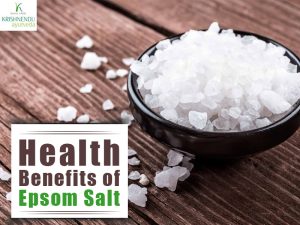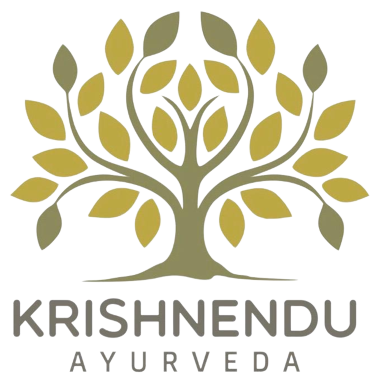Blog

Yoga & Pranayama to Manage Stress, Anxiety and Depression
The modern hectic lifestyle is making many victims to stress, anxiety and depression. When constant fear about something persists in the mind, it takes form of anxiety and can often lead to depression. Yoga and Pranayama is considered as effective treatment options for these conditions. When regular practice of yoga helps one stay calm and relaxed, breathing right with Pranayama relieves the mind from unnecessary clutter of thoughts that give rise to anxiety. Yoga poses to manage anxiety Yoga stretches the body along with stimulating different hormones. The stretch relaxes the body and calms the mind, while the hormones help heal the nervous system. When stretching the body, Yoga also promotes the release of trapped tension between the muscles. Here are some yoga asanas recommended for relieving stress and tension while also eliminating negativity from the system. • Setu Bandhasana – It ensures enhanced blood circulation throughout the body. The asana stretches the back which helps calm the mind and reduces stress. Beneficial for fighting insomnia, the asana is good for managing anxiety issues. • Paschimottanasana – The seated forward bend help stretch almost every part of the body while also being relaxing. Indulging in the asana, helps calm down and relieve worry from the body. • Marjariasana – The asana completely flexes the spine and when combined with breathing, it is beneficial for stress release. It also has great healing, calming and relaxing benefits as it makes the body more flexible while also improving the circulation. • Balasana – The child’s poses is a calming and restorative pose which helps relax the mind and rejuvenate the body. The stretch in the back is beneficial for relaxing the spinal column, while also soothing pain and alleviating pain in the neck, back and shoulders. Resembling a fetal position, the asana is highly recommended for physical, mental and emotional well-being. • Dhanurasana – The bow pose helps expand and open the shoulders, chest and neck, strengthens the back and abdominal muscles and relieves stress and anxiety. • Shavasana – It is one of the highly recommended asana for relieving stress and depression as it encourages ultimate relaxation of the mind and body. Shavasana helps the nervous system integrate the neuromuscular information to keep anxiety at bay. Pranayama for anxiety and depression Giving attention to the breath promotes purification of both the mind and body, while also raising the energy. This also frees the mind from unnecessary thoughts that promote anxiety. • Nadi Shodhana – The alternate nostril breathing technique balances the subtle life energy of the body, calms the mind and increases vitality. It is a highly recommended Pranayama for combating depression and emotional imbalance. • Kapalbhati Pranayama – The skull shining breath is good for calming the mind, decreasing the thoughts, energizing the mind and body and also for depression, especially when anxiety is present. • Bhastrika Pranayama – The bellow breath technique detoxifies the body and purifies the mind, stimulates metabolism and is beneficial for depression and anxiety. • Ujjayi Pranayama – It is a recommended Pranayama for depression, anxiety and stress. Ujjayi Pranayama is also beneficial for calming and soothing the nervous system.




Health Benefits of Epsom Salt
Epsom salt is not actually a salt but a naturally forming pure mineral compound of magnesium and sulphate. Hailed as a natural remedy for many ailments, it offers numerous health benefits too. Here are some of the notable benefits of Epsom salt. Relaxes the body and eases stress An Epsom salt bath is considered the most ideal for relaxation as when the salt is dissolved in warm water, it can be fast absorbed through the skin to replenish the magnesium levels which reduce the effects of adrenaline by promoting the production of serotonin. Magnesium also influences the production of energy cells helping ease the feeling of restlessness and anxiety. Relieves pain and muscle cramps Epsom salt bath is also known for easing pain, relieving inflammation, muscle tension, soreness and pain. It is also considered beneficial for bronchial asthma and migraine headaches. An Epsom salt soak is also advised for treating tired and sore feet and to manage foot odour. Helps in muscle and nerve function Epsom salt is shown to regulate the electrolytes in the body and to ensure proper functioning of muscles, nerves and enzymes. Magnesium is also critical for facilitating the proper use of calcium to help transmit chemical signals throughout the nervous system. Prevents hardening of arteries and blood clots The salt can help improve blood circulation and promote cardiovascular health by decreasing inflammation and protecting the elasticity of arteries which in turn prevents blood clots, plaque build-up and damage to the wall of the arteries. Regulates blood sugar Magnesium and sulphate help improve the body’s ability to produce and effectively use insulin which helps manage the severity of diabetes. Taking Epsom salt orally or transdermally help regulate blood sugar while also improving energy levels. Relieves constipation Epsom salt is popularly used as a saline laxative. When taken internally it acts as a detoxifying agent for cleansing the colon. It increases the water in the intestines and provides temporary relief from constipation.




Dinacharya – The Ayurvedic Daily Routine for a Healthy Life
Dinacharya is the daily routine concept in Ayurveda that formulates daily activities based on the cycles of the nature. The three doshas, Vata, Pitta, and Kapha each have their own period of time when their energies dominate during a twenty-four hour day. Establishing a routine in tune with the doshas help support the body’s natural rhythm as well as maintains balance and promotes optimum health. Here is how to follow an Ayurvedic dinacharya. Morning • Waking up – The ideal time to wake up is two hours before sunrise during the Vata time of the day which is also the most Sattvic, peaceful and still time. It is also ideal for spiritual practice and learning. • Elimination – Drinking a glass of lukewarm water and evacuating the bowels in the morning after waking up is considered the healthiest. Waiting longer could lead to an increase in Ama or toxins which can cause imbalances in the body. • Cleansing sensory organs – Along with washing the eyes and brushing the teeth, scraping the tongue, oil pulling, nasya or neti poti and cleaning the ears are also recommended as Ayurveda treatments which effectively cleanses all the sensory organs. • Abhyanga – Performing a full body oil massage regularly will nourish and strengthen the body, promotes circulation while also preventing premature aging. • Exercise – Regular practice of any exercise or yoga enhances circulation and oxygenation of the tissues, strengthens the Agni, tones the body and rejuvenates the body. • Bathing – Bathing should be done after exercise. Use of lukewarm water is recommended for bathing. • Meditation – Meditation is key in dinacharya to help increase self-awareness and also to cleanse the mind of unwanted thoughts. • Breakfast – Breakfast should be warm, nourishing and wholesome. A healthy breakfast in the morning is mandatory after an overnight fast. Skipping breakfast will deplete the body of energy and induces lethargy. Afternoon • Lunch – Lunch should be the heaviest meal of the day and should be taken between 12 noon or 2 pm as the sun and the Agni or the digestive fire is the strongest during this time. Skipping lunch or a late lunch can cause many metabolic disorders. • Walk – It is also recommended as a good practice to take a short walk after lunch to help promote digestion. Evening • Relax – Sundown is considered another Sattvic time of the day and should be utilised for meditation or light exercise. It is also an important time to relax and stay calm. • Dinner – Ayurveda recommends that dinner should be taken at least three hours before bed to help the body digest the food before sleeping and thus to prevent Ama build-up. Dinner should also be lighter than lunch. • Sleep – Sleeping around 10 pm is the most ideal according to Ayurveda as it is the Kapha time of the day when the body naturally feels heavy. After 10 pm, it is the next active Pitta time when sleeping will be difficult. Sleeping at this recommended time will also ensure adequate sleep of 6 to 8 hours before waking up the next morning.




Super Foods to Eat for the Health of Vital Organs
Being truly healthy simply means providing your body with everything it needs to function. Every organ in the human body needs specific nutrients to improve its functions and prevent disorders pertaining to them. Here are few foods that will provide you the required nutrients– Brain Enrich your meals with foods rich in Omega-3 fatty acids like walnuts, chia seeds and sardines. Leafy greens like Broccoli, Cauliflower and Spinach are recommended. Plums, cherries, avocadoes, berries, oranges and red grapes are high in ORAC (Oxygen Radical Absorption Capacity) that is good for brain health. Heart Foods such as whole grains, leafy greens like spinach, berries, fishes rich in Omega-3 fatty acids, walnuts, almonds, tomatoes and seeds like flaxseeds and chia seeds are highly recommended. Fruits like banana, orange, papaya and cantaloupe that are rich in potassium, beta-carotene and magnesium are beneficial for heart health. Having Beans that is high in fiber and heart-healthy minerals like calcium, magnesium and potassium is recommended. Full of heart-friendly nutrients including Vitamin B folate, Asparagus is extremely good for hearth health. Liver Sulphur-containing foods like onions and garlic along with beetroot carrot, grapefruit, lemons and spinach is good for liver health. A recommended liver care ritual is to drink warm water mixed with lemon juice upon waking up in the morning to filter the unwanted toxins and to enhance the liver functions. Lungs Adding foods like apples, walnuts, berries, broccoli, ginger, flaxseeds, garlic and turmeric in diet ensures healthy lungs. Drinking adequate amount of water is also necessary to keep the lungs hydrated as dry lungs are at an increased risk of irritation and inflammation. Kidney Stay away from processed foods. Have foods like cabbage, apples, asparagus, garlic, berries etc. Drink sufficient amount of water. Teeth and Bones Low-fat milk, cheese, yogurt, almonds, spinach and soybeans are good sources of dietary calcium. Fish and eggs are good in Vitamin D that is necessary for proper calcium absorption. Hair Vitamin B from leafy greens, peas, tomatoes and carrots support cell growth for healthy hair. Beans and Pumpkin Seeds are packed with Zinc that helps in reducing hair loss. Cottage Cheese is a great source of protein that is an absolute necessity for healthy hair. Skin Green leafy vegetables like Spinach and broccoli contain alpha-lipoic acid that helps in disease-free and healthy skin. All colourful fruits and vegetables have multitude of Vitamins C, E, K and A that is essential for skin health. Walnuts have Omega-3 Fatty acids that is extremely good for skin health.




Significance of Surya Namaskar
Surya Namaskar or Sun Salutation is an age-old practice of paying respect to the sun. Constituting 12 different postures, Surya Namaskar is a unique and powerful yoga practice which is believed to transform the entire system. Sunrise is considered to be the best time to perform sun salutation, even though it can be done during any time of the day as well. There are 3 speed variations to practice Surya Namaskar – slow pace to make the body flexible, medium pace to tone the muscles and fast pace which acts as an excellent cardiovascular workout. Below listed are the benefits of regular practice of Surya Namaskar. Improves Blood Circulation – As Surya Namaskar involves an active process of inhalation and exhalation, it helps the lungs get constantly ventilated and ensures that the blood is oxygenated. This helps detoxify the body and also eliminates excess carbon dioxide and other toxins. Aids in Weight loss – When done at a fast pace, Sun salutation is a highly preferred cardiovascular workout. Doing one round of Surya Namaskar burns around 13.90 calories. It stretches the abdominal muscles while also simultaneously helping to reduce the excess weight around stomach. The 12 asanas help tone the arms and abdomen along with providing great flexibility to the spine. Strengthening the skeletal system and the ligaments is another added benefit. Promotes a Regular Menstrual Cycle – The postures in Surya Namaskar help suppress the irregularity in menstrual cycle and when practiced daily, it also ensures an easy childbirth. Healthy Skin and Hair – Youthful and healthy skin and hair even in old age is another benefit of Surya Namaskar. By improving the blood circulation, it aids in bringing a glow to the face, prevents the onset of wrinkles and makes the skin look radiant. It also helps prevent hair loss and the ageing of hair. Strengthen muscles and joints – Surya Namaskar is beneficial for stretching and strengthening the muscles, joints, ligaments, and the skeletal system. The movements also help improve the flexibility of the spine. Practicing the postures help bring symmetry to the limbs while also helping the vital organs to function better. Enhances intuition – Regular practice of Surya Namaskar is said to help the solar plexus grow which develops one’s intuitive ability and brings more focus.




Shirodhara – The Ayurvedic Way of Relaxation
Shirodhara is an Ayurveda therapy that is preferred for inducing a deep state of relaxation. The word shirodhara is a combination of two Sanskrit words, ‘Shiro’ which means head and ‘Dhara’ which means flow. The process involves continuously pouring a thin stream of medicated oil over the forehead from a pot suspended at a specific height. Caressing the forehead with the stream of oil is said to have a profound effect on the high concentration of nerves present there as the vibrations caused by the pressure of the oil help stimulate the nervous system. The therapy also stimulates the vital points in the head and improves blood circulation of the brain. Benefits of Shirodhara Owing to its impact on the nervous system, Shirodhara is highly preferred to relieve stress, anxiety, hypertension, fatigue and depression. The therapy is also said to strengthen the cognitive organs. Some of the profound benefits of Shirodhara include, Stimulates nervous system – The therapy stimulates and relaxes the nerves which help bring balance to the Praan Vayu. This leads to a healthy functioning of the cerebral system and boosts cognitive ability that are vital for the proper functioning of the nervous system. Awakens the senses – The gentle pressure of the oil falling on the head activates the pituitary gland and awakens the senses. As hormones secreted by the pituitary gland help control growth, regulate blood pressure and governs the thyroid glands and metabolism, the stimulation of the gland encourages optimum health and wellbeing. Mental clarity – Shirodhara also aids in maintaining a balanced state of mind by activating the requisite glands. This help improves concentration and focus and also ensures mental clarity. Improves sleep – The therapy restores the natural rhythm of the body and also removes fatigue which in turn induces sound sleep. Treats hair loss – The medicated oils used in the therapy treats the hair follicles and repairs hair loss and hair damage by nourishing the scalp and the hair roots. Shirodhara is highly recommended for the following conditions. Post-Traumatic Stress Disorder – The excess Vata dosha which primarily causes PTSD can be regulated with Shirodhara. The medicinal properties of the oils used to help soothen the nervous system and ease the symptoms of the condition. Hypertension – The therapy is effective for lowering blood pressure by restoring balance of Vata dosha which causes Raktagata Vata which is correlated with high blood pressure. Insomnia and Shift Work Sleep Disorder – Shirodhara using milk is highly effective for treating insomnia. If sleeplessness arise from an imbalanced sleep cycle caused by working in a night shift, the therapy helps remove the fatigue and induces rest. Jet lag – Shirodhara also help reset the sleep pattern disturbed by frequent air travel. The daily pattern of waking and sleeping can be brought back to balance with the therapy. Types of Shirodhara Snehadhara – This kind of Shirodhara uses medicated herbal oils and ghee. Different oils are also mixed and used for specific therapeutic benefits and according to the dosha involved. Ksheeradhara – Medicated milk or milk infused with herbs is used in this type of Shirodhara. Takradhara – Herb infused takra or butter milk is used for the Shirodhara.

